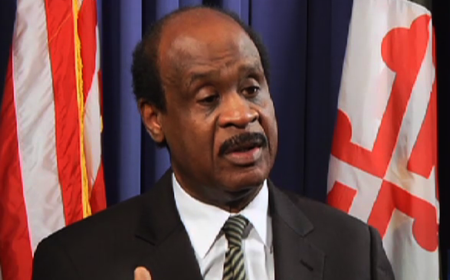
Leggett Presents Capital & CIP Budgets
Montgomery County Executive Isiah Leggett unveiled his six-year Fiscal Year (FY) 2015 Capital Budget and FY 2015-2020 Capital Improvements Program (CIP) that continues to make funding the County’s unprecedented growth in school enrollment the highest priority.
The budget also includes needed capital spending for approved plans to spur economic growth in Wheaton, Shady Grove, White Flint and the Great Seneca Science Corridor — part of Leggett’s plan to create 100,000 new jobs in the County.
Overall, Leggett is proposing a $4.49 billion fiscal year (FY) 2015-2020 CIP budgets — an overall spending increase of 2.3 percent — while moving forward on the County’s priorities in education, economic development, mass transit, road maintenance, affordable housing and facilities serving seniors and youth.
“Montgomery is the number one education County in the State of Maryland,” said Leggett. “Over the past eight years, I have increased County resources for school construction by 36 percent — despite the challenges of the Great Recession. Our growing enrollment — with 25,000 more students expected in the next dozen years — makes it even harder to give County students the classrooms and buildings they deserve. I will continue to advocate in Annapolis with other County Executives and our delegation for more school construction resources from the State. The County, however, will continue to dedicate an unprecedented amount of its resources to education. This budget increases County school construction dollars by more than 13 percent over last year.”
Quick links to key sections:Children Prepared to Live and Learn
Higher Education
A Strong and Thriving Economy
Transportation
Affordable Housing in an Inclusive Community
Public Safety
Public Health
Quality of Life
Environment
Washington Suburban Sanitation Commission
Fiscal Summary
Children Prepared to Live and Learn
Leggett’s budget recommendation supports Montgomery County Public Schools (MCPS) at record levels:
- Funds the construction and technology request, including State and local contributions, at $1.7 billion, up 25.8 percent from the previous CIP.
- Funds the total local contribution to schools at $1.247 billion.
- Funds a significant increase in the local contribution for school construction totaling $1.117 billion – up 13.1 percent or $129.5 million from the approved FY 13-18 CIP – and an historic high.
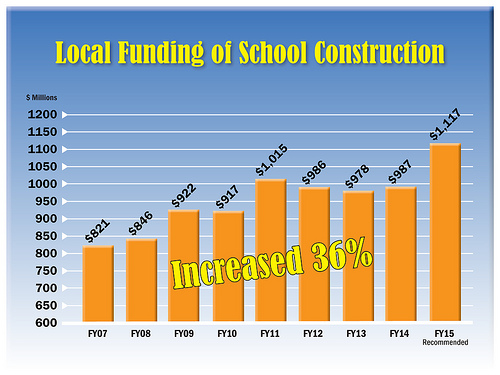
Photo: Montgomery County Government
This increase is partly possible through reprioritizing and reducing County Government projects by $308.3 million — or 14 percent less in tax-supported dollars. Supplementing local funding, the budget assumes $240 million in traditional State funding and $230.7 million in new State-supported funding for MCPS. The County expects this new funding to increase to the full $600 to $700 million as MCPS completes feasibility studies for other projects to add classroom capacity.
“We are known nationally for our school system, which contributes directly to our ability to attract and retain an educated workforce, business and industry,” said Leggett. “To maintain the County’s role as a key economic engine of the State of Maryland, we must address the needs created by our double-digit school enrollment increases – the highest in the State.”
From 2009 to 2014, MCPS grew by 13,500 students, more than the growth of the student population in Anne Arundel, Howard, Frederick and Baltimore counties combined over the same time period. In October 2013, Leggett announced a $600 to $700 million initiative to build additional classrooms. He was joined yesterday by Baltimore County Executive Kevin Kamenetz and Prince Georges County Executive Rushern L. Baker, III to kick off the effort in Annapolis for this critically-needed funding.
Increased state aid is essential to fund four new elementary schools and two new middle schools; new additions in 18 elementary schools, two middle schools and two high schools; and future school capacity projects that are under development and needed to address current and future needs.
Under the Executive’s recommended FY 15-20 CIP, 455 new classrooms would be added.
The recommended budget also supports the MCPS request for improvements to the Blair Ewing Center; modernization projects at 21 elementary schools, four middle schools and five high schools; and a $37 million increase in funding to improve heating, air conditioning and ventilation in existing classrooms.
To address challenges faced by at-risk children and their families, the budget funds Linkages to Learning, school-based health centers, high school wellness centers, child care in schools, a feasibility study to consider adding a High School Wellness Center at Kennedy High School and $13.5 million to relocate the Children’s Resource Center and use the site in Rockville for the new Richard Montgomery Elementary School. State funding has been requested to support this essential project.
Higher Education
Support for Montgomery College and The Universities at Shady Grove strengthens education and boosts economic development by ensuring a highly skilled labor force. Twenty-five percent of MCPS graduates from 2013 attended Montgomery College in fall 2013. Funding for Montgomery College totals $348.1 million, with $89.6 million assumed to be provided by State funding.
Leggett’s recommended budget includes the following Montgomery College projects: For the Rockville campus, constructing the Rockville Parking Garage in 2015; completing the renovation of the Science West Building in FY16; and initiating design of the Rockville Student Services Center in 2014, with an estimated completion date in FY17.
On the Germantown campus, the Bioscience Education Center will open in FY15, the Germantown Science and Applied Studies Phase 1 Renovation will be completed by FY17 and design will begin in FY19 for the Germantown Student Services Center.
On the Takoma Park campus, design for the Takoma Park/Silver Spring Math and Science Center project will begin in FY18 and construction will begin in FY20.
The budget also maintains $20 million to build a parking garage at The Universities at Shady Grove (USG), leveraging State support for a new Biomedical/Engineering Education academic building and allowing USG to expand its academic offerings.
A Strong and Thriving Economy
Leggett’s recommended capital budget supports initiatives to further boost Montgomery County’s economic vitality and create good jobs. The budget leverages the County’s fundamental economic strengths and the investment of outside partners to grow jobs, particularly in areas supported by mass transit.
Funding continues the County Executive’s Smart Growth Initiative to facilitate private, mixed-used, high-density development near the Shady Grove Metro Station, including:
- The relocated Emergency Maintenance and Transit Operations Center (EMTOC) that opened in October 2013 cleared the way for the old County Service Park West to be sold for private, mixed-use development in October 2014. Compressed natural gas fueling stations (one of which will be open to the public) and a new day laborer center will be constructed on the EMTOC site.
- Construction of the new Public Safety Training Academy will begin in late 2014 so that the old Academy site will be available for private, mixed-use development, including a significant number of affordable housing units. Enhancements at the new academy will include high bay training areas for firefighters; cityscape features for police exercises; increased parking; a burn building with both residential and commercial components; and enhanced K9 facilities.
- Staff is finalizing a request for proposals from private developers to redevelop the County Service Park East, including addressing MCPS bus depot needs.
To support White Flint redevelopment, nearly $340 million in public funds has been dedicated in this CIP to leverage significant private sector resources, including more than $170 million for:
- Special tax district financing for construction of a new road and bike lane – Main Street/Market Street;
- A reconfigured Executive Boulevard North;
- A reconfigured intersection at Old Georgetown Road, Executive Boulevard and Hoya Street that constitutes the western workaround. (The workaround is comprised of transportation projects needed to handle traffic while Rockville Pike, Executive Boulevard and Nebel Street are reconstructed to establish a new street grid system in White Flint.); and
- Various projects in the eastern workaround.
To further support White Flint redevelopment, the recommended capital budget includes another $169 million for the Montrose Parkway East and Chapman Avenue Extended projects and the relocation of the White Flint Fire Station.
Plans are underway to build a new, structured parking garage for the conference center that includes future retail and affordable housing. Once planning is completed, a new CIP project will be forwarded to the County Council for approval.
The Wheaton Redevelopment project is also moving forward to bring more investment and transit-oriented, mixed-use development to the Wheaton Central Business District. Negotiations are underway with the firm selected to construct the new Maryland-National Capital Park and Planning Commission (M-NCPPC) headquarters and a town square near the Wheaton Metro Station.
Transportation
Leggett’s budget recommends a balance of road, mass transit and pedestrian-bikeway projects while also focusing resources on maintaining core transportation infrastructure. Anticipating that Maryland and the federal government will fund the Purple Line (which will provide light rail service from College Park to Bethesda), the CIP includes $144.2 million to support the project by funding the Bethesda South Metro Station south entrance, the Capital Crescent Trail, the Silver Spring Green Trail and State-requested changes to the Silver Spring Library. The County also anticipates providing land donations and in-kind staff support for the project. Additionally, the State has indicated its commitment to the Purple Line by setting aside $711 million from the Transportation Infrastructure Act of 2013.
The County Council recently approved the Countywide Transit Corridors Functional Master Plan, which identifies specific corridors for a rapid transit system to reduce congestion on County and State roadways, increase transit ridership and improve air quality. Leggett’s recommendation includes $10 million provided by the State in its Consolidated Transportation Program for 2014-2019 to begin facility planning for the MD 355 and US 29 corridors in the approved Master Plan.
Funding is included to construct the Needwood and Frederick roads bike paths; plan and design the Falls Road East Side Hiker/Biker Path and the Seven Locks Bikeway and Safety Improvements project; and a previously approved grade separated crossing across Georgia Avenue for the Metropolitan Branch Trail.
To reduce road congestion that costs County residents precious time and damages the environment, the budget includes funding for the following projects:
- Observation Drive Extended. This extension will support existing and future development in the UpCounty area and provide needed congestion relief between Germantown and Clarksburg.
- Clarksburg Transportation Connections. A public-private partnership will provide connections between existing roads in Clarksburg, including Little Seneca and Snowden Farm parkways, and improve the Brink Road intersection to support development and enhance traffic flow.
- Goshen Road South. Widening existing lanes and adding center medians, sidewalks and bike paths will provide traffic congestion relief and safety improvements.
- Snouffer School Road and Snouffer School Road North (Webb Tract). These two related projects will provide traffic congestion relief and safety improvements, including sidewalks, turning lanes and traffic signals, in the vicinity of the County’s future Multi-Agency Service Park.
- East Gude Drive. Sidewalk safety improvements and enhanced turning lanes at intersections will improve existing and future traffic flows.
- Montrose Parkway East. A new east-west road will include a bridge, interchanges, sidewalks and bike paths. The road will connect the existing Montrose Parkway/Rockville Pike interchange to Viers Mill Road and improve access to the White Flint area and to I-270. The County is coordinating with the Maryland State Highway Administration on several portions of the project.
- Seminary Road. Realigning an existing intersection in Silver Spring will improve traffic flow and enhance safety by adding on-road bike lanes and sidewalks.
The recommended CIP also includes $154 million to protect and maintain roads. An additional $20 million, added to the previously approved $36.9 million in funding, is allocated to the residential and rural road resurfacing project – a more than 50 percent increase over the approved FY13-18 investment to cost-effectively preserve the County’s existing roads. A timely investment of $147,000 per lane mile in road resurfacing avoids a future rehabilitation cost of $680,000 per lane mile.
To upgrade the County’s bridge infrastructure, the Valley Road, Piney Meetinghouse Road and Park Valley Road bridges will be replaced.
Affordable Housing in an Inclusive Community
Preserving and increasing the affordable housing supply in the County – particularly in partnership with the Housing Opportunities Commission (HOC), private entities and nonprofit housing providers – remains one of Leggett’s top priorities. Through these partnerships, the County has leveraged $4.18 for every County dollar invested. Together, the Affordable Housing Acquisition and Preservation (AHAP) project and the Montgomery Housing Initiative have financed 4,097 units of affordable housing. When added to other County programs, the total number of affordable units produced and preserved over the past seven years is 9,100, including seven affordable senior housing developments with 599 units.
The budget exceeds the Executive’s stated goal of issuing $100 million in bonds to support affordable housing projects. Loan repayments from many of the projects will be reinvested in new housing – further multiplying the impact of the original investments. The budget also includes $8 million in general obligation bond funding for the AHAP project.
The County, a for-profit developer and nonprofit service providers are partnering in the 100,000 Homes Campaign to increase housing options for homeless persons. By relocating the Progress Place Homeless Service Center and using County funds, 21 co-located living units will be built for formerly homeless people. nonprofit service providers will operate the facility.
Funding is also provided to support HOC’s efforts to expand and improve housing options for low and moderate income persons.
Investments in Core Facility Infrastructure
One of the challenges of addressing growth in the County is to maintain existing infrastructure. Leggett’s capital budget recommends boosting critically needed investment to undertake MCPS’ heating, air conditioning and cooling projects; fund repairs to County Government buildings; make essential repairs to the Western County Outdoor Pool, the Kennedy Shriver Aquatic Center and the Red Brick Courthouse; fund M-NCPPC projects to maintain trails, protect streams, replace obsolete equipment and computers; and add female facilities at the Cabin John #30 and Gaithersburg #8 Fire stations.
Leggett is initiating a pilot project to bring a new approach to the way Montgomery County updates facilities. Public Libraries will be the first department to benefit by shortening facility closure times and expediting more cost-efficient renovations. The Department of General Services will seek opportunities to apply this strategy to other County facilities.
Public Safety
To address a backlog in equipment replacement resulting from funding shortfalls during the recent economic crisis, Leggett is recommending a new $51.9 million fire apparatus replacement initiative to create improvements in coverage and response time. The program will provide a steady stream of CIP funding, primarily from the Emergency Medical Services (EMS) Transport Insurance Reimbursement Law, to put the County back on track in addressing fire equipment needs. During the six-year period, the following units will be replaced: nine aerials, 64 EMS units, 21 engines, four all-wheel drive brush/wildland pumpers, four rescue squads and two tankers. The program will also be funded through the operating budget to purchase equipment for the apparatus, additional apparatus and pay debt service costs.
The recommended CIP adds funds for:
- Planning and construction of a new White Flint Fire Station to replace Rockville Station #23;
- Construction of a permanent Clarksburg Fire Station;
- Replacement of the Glenmont #18 Fire Station in 2016;
- Renovation and expansion of the Kensington (Aspen Hill) #25 Fire Station in 2018;
- New female facilities at Gaithersburg Fire Station #8 added to those already planned for Cabin John Station #30; and
- Planning for renovations of the Glen Echo and Rockville #3 Fire stations.
Leggett’s recommended budget will replace the existing 2nd District Police Station in Bethesda under a general development agreement cost-sharing arrangement between the County and a private developer. This arrangement is a win-win for the County and the taxpayers, leveraging private funding while enhancing development opportunities in the Bethesda Central Business District.
CIP funding includes a hands-on training center for correctional officers at the Montgomery County Correctional Facility and renovation and expansion of the 35-year-old kitchen and dining area at the Pre-Release Center to improve energy efficiency and provide adequate capacity. State funding for 50 percent of these projects is being sought.
The proposed capital budget continues funding for the Public Safety Systems Modernization program. This project is critically needed to enhance the quality and response of the County’s public safety departments by:
- Modernizing the County’s core public safety radio communications system to improve efficiency and reliability for first responders while leveraging the latest technical advances and meeting new federal standards by 2017;
- Upgrading the fire station alerting system at 43 existing fire stations with modern alarm systems to enable better quality service for first responders and residents;
- Establishing a new computer-aided dispatch system to meet future needs and allocate the appropriate resources to emergencies; and
- Acquiring a new records management system that will promote greater cross-sharing of information across several public safety departments.
Public Health
The budget continues support for construction of the new Dennis Avenue Health Clinic, which will begin soon and be completed by summer 2016. State funding is under consideration by the governor. This facility handles one out of every 150 cases of tuberculosis in the United States — 75,000 patients a year – which is more than 10 times the caseload in 1984 when the center opened.
The Department of Health and Human Services has also worked with Maryland Department of Health and Mental Hygiene representatives to identify State support for replacement of the Avery Road Treatment Center. State Mental Health officials have encouraged the County to pursue possible public-private partnerships and have asked the governor to indicate a preliminary interest in providing $100,000 to assist with planning costs for the project. State assistance for construction costs will also be pursued.
Quality of Life
Leggett’s recommended budget invests in facilities and services to maintain the high quality of life for which Montgomery County is known. Funding is continued for the Silver Spring Library, which is scheduled to open later this year, and the Wheaton Library and Community Recreation Center, scheduled to open in FY18. To boost the Wheaton project’s cost-effectiveness, it will also include offices for the Charles W. Gilchrist Center for Cultural Diversity, previously located in the Mid-County Regional Services Center.
To enhance recreation, the recommended budget includes FY14 funding for a new Potomac Adaptive Sports Court project, which would be the only outdoor team sports surface for persons with disabilities in the County. The Friends of Potomac CRC, Inc. has agreed to donate $25,000 to support the project. In addition, the capital budget includes funds to complete the Ross Boddy and Good Hope neighborhood recreation centers in 2015 and 2017, respectively. The North Potomac Community Recreation Center will be completed by 2016, providing needed community recreation and meeting space in North Potomac.
For parks, County funds will leverage $2 million in private funding through the Montgomery Park Foundation Capital Campaign to rehabilitate the historic Riley/Bolton House at the Josiah Henson Historic Park and build a new visitor center. Site improvements will provide experiential learning about slavery and Josiah Henson, a slave whose real life escape from the Riley plantation inspired Harriett Beecher Stowe’s “Uncle Tom’s Cabin.” Another new project, the Western Grove Urban Park that was acquired through a partnership with Chevy Chase Village, will provide green space near the densely populated Friendship Heights Metro Station area. In addition, the budget supports Phase V for Brookside Gardens, which includes construction of a new greenhouse and plant propagation facility, leveraging state Program Open Space funding and a $1 million private donation. The proposed budget also includes construction of the Woodside Urban Park; funding for preserving and maintaining existing park facilities; and increased funding for hard surface trail renovations, stream protection, Americans with Disabilities Act (ADA) projects and enterprise facilities.
The Revenue Authority will construct a new facility with a restroom and grill/snack bar area at the Hampshire Greens Golf Course near the ninth tee. Improvements at the Little Bennett, Needwood, Northwest, Falls Road and Poolesville golf courses and the Montgomery County Airpark are also included in the budget.
Environment
The recommended budget will ensure Montgomery County’s environmental quality for future generations and maintain the County’s environmental leadership position in the state and the country. Leggett’s budget will invest more than $363 million in stormwater management actions that will help meet federal clean water act requirements. The measures will significantly enhance the County’s efforts to improve water quality in local streams and, ultimately, the Chesapeake Bay, by shifting the focus from concrete structures to natural treatments such as rain gardens, bioretention fields and other cutting edge “green” technologies. The budget includes $16.6 million in storm drain projects to safely and effectively protect property and the environment. As a necessary corollary to smart growth policies and plans, $5.6 million is included to preserve agricultural land easements to protect the County’s investment in the Agricultural Reserve and preserve open space as the County continues to grow and develop.
Washington Suburban Sanitation Commission
To achieve environmental goals and improve efficiency, the recommended budget continues construction of improvements to wastewater treatment and solids handling facilities at the regional Blue Plains Advanced Wastewater Treatment Plant. The funding includes construction of the Bi-County Water Tunnel scheduled for completion in July 2015.
The Large Diameter Water Pipe Rehabilitation Program is fully funded to repair, replace, monitor and protect large cast iron and pre-stressed, concrete, cylinder pipe (PCCP) water mains. The budget extends these efforts to 36-inch diameter PCCP mains. Also fully funded are the Trunk Sewer Reconstruction Program that inspects, evaluates and repairs sewer mains in environmentally sensitive areas; upgrades to the Blue Plains, Seneca and Damascus wastewater treatment plants for enhanced nutrient removal to meet the environmental goals in the Chesapeake 2000 strategy; and increases for replacing small diameter water mains from 51 miles in FY14 to 60 miles in FY15.
The total FY15-20 Recommended CIP, excluding WSSC, totals $4.492 billion for six years, an increase of $103 million, or 2.3 percent.
The recommended CIP assumes general obligation borrowing for the six-year period at $324.5 million a year. Leggett is recommending this increase in bonds due to the pressing needs for schools and improvement in a number of fiscal factors. The CIP allocates pay-as-you-go (PAYGO) funding at 10 percent of the amount of general obligation bonds to be issued each year, or $32.5 million a year. This PAYGO funding level is consistent with approved County policy and with information shared with bond rating agencies.
The recommended CIP is available at www.montgomerycountymd.gov/OMB.
Related posts:
BOE Leaders & Superintendent on Legget's CIP
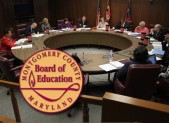
Montgomery County Board of Education President Phil Kauffman, Board Vice President Patricia O’Neill and Superintendent Joshua P. Starr released the following statement concerning the release of County Executive Isiah Leggett’s Capital Budget Recommendation: “We want to thank County Executive Isiah Leggett for his commitment to school construction in his recommended Capital Improvements Program for Fiscal […]
Leggett Presents Capital & CIP Budgets
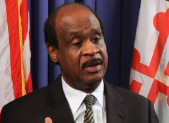
Montgomery County Executive Isiah Leggett unveiled his six-year Fiscal Year (FY) 2015 Capital Budget and FY 2015-2020 Capital Improvements Program (CIP) that continues to make funding the County’s unprecedented growth in school enrollment the highest priority. The budget also includes needed capital spending for approved plans to spur economic growth in Wheaton, Shady Grove, White […]

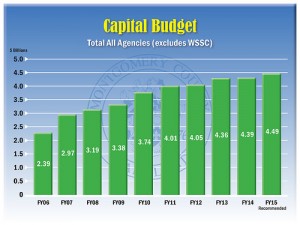
Engage us on Facebook
Follow us on Twitter
Tweets by @mymcmedia